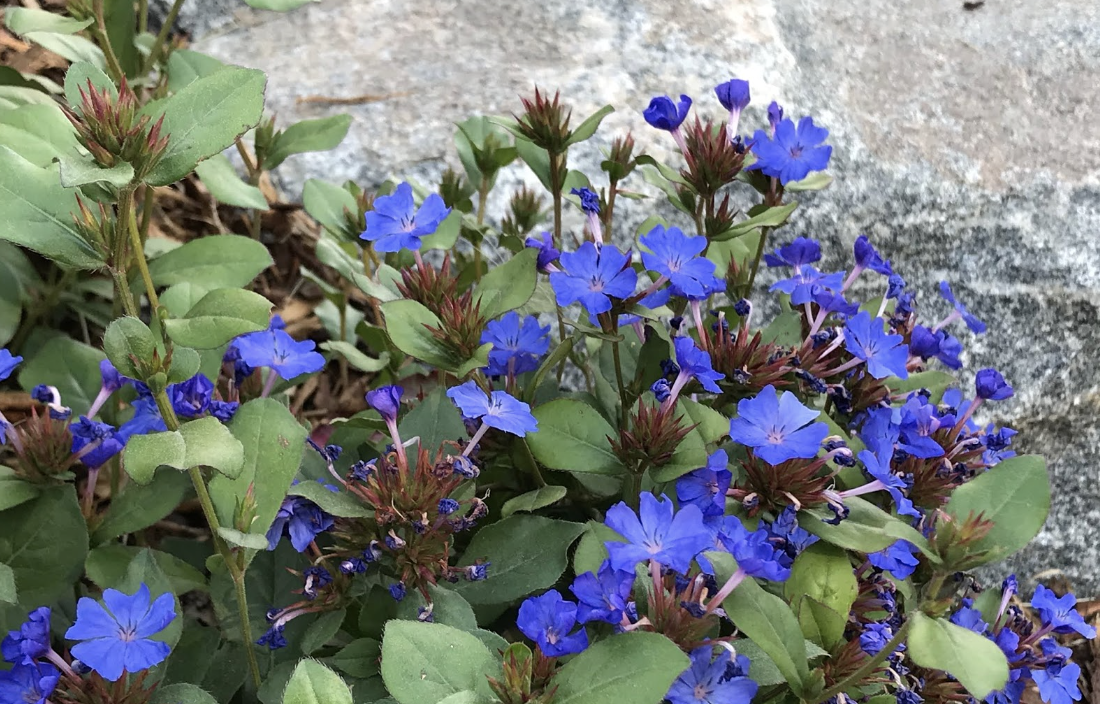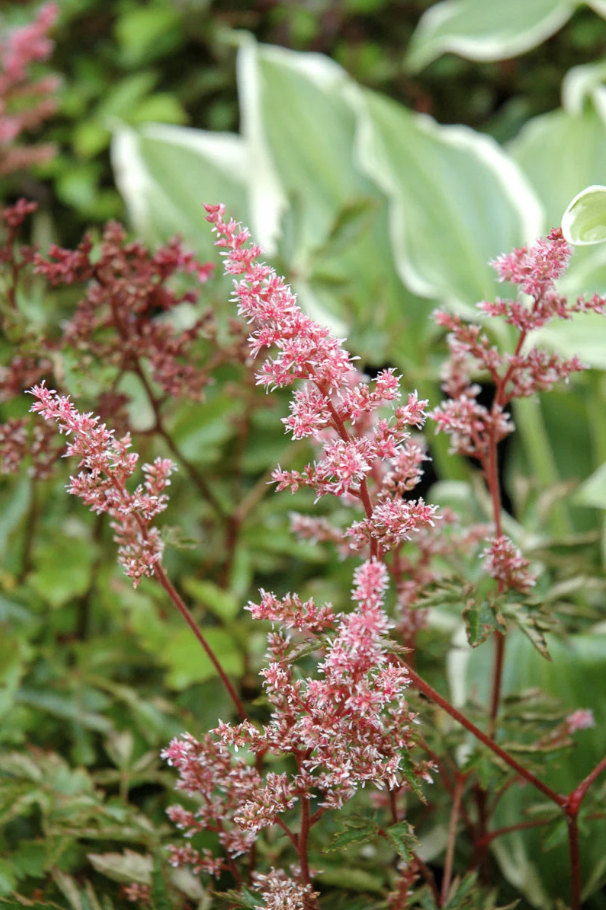

Japanese Maple 'Bloodgood'





































HARDY PLUMBAGO, Ceratostigma plumbaginoides
Spreading Groundcover, 6-8" tall
Bright blue flowers MID SUMMER beautifully shine amid red foliage THROUGH AUTUMN.
ENVIRONMENT + MAINTENANCE
FULL SUN to PART SHADE
SOIL -- tolerates dryness, but does best in evenly moist soil with good drainage (ie. soft not compacted with some irrigation) / no standing water
LOCATION -- Plant under shrubs and trees or wherever grass is sparse
Low-maintenance | Drought tolerant



Botanical Name: Tricyrtis formosana 'Autumn Glow'
Blooms In: Aug-Sep Light: Full to Part Shade
Hardiness Zone: 5-9 Soil: Evenly Moist, slightly acidic
Mature Height: 24-26" Spacing: 20-24"
🌱 GROWING GUIDE 🌱
Indispensable for shady areas, these delicate plants make the hottest summer day seem cooler. Great variety exists in form and size, giving the creative gardener many planting options. Most Ferns are slow growing and can take several years to reach their mature size, which varies greatly between varieties.
Light/Watering: All Ferns thrive in light to heavy shade. A few, such as Lady Ferns (Athyrium filix-femina) will grow in full sun in the North, provided the planting site is damp. Water Ferns regularly if rain is not sufficient, and do not let the soil get completely dry. A 2″ thick mulch of composted leaves or pine needles will help keep roots cool and damp.
Fertilizer/Soil and pH: Ferns prefer soils high in organic matter that are well-drained but do not dry out. Most will tolerate poor soils and a pH of 4 to 7; Maidenhair Fern (Adiantum) prefers a more alkaline soil between pH 7 to 8, but will grow at a lower pH. Apply fertilizer in spring, just after new growth has begun. Ferns are very sensitive to fertilizers; use a slow-release fertilizer when new growth appears in early spring. For initial planting of bareroot plants, lay the mat formers (Adiantum, Athyrium, Dennstaedtia, and Dryopteris) with buds and old fronds facing up in a shallow hole and cover with an inch of soil. Plant bareroot crown-formers (Matteuccia, Osmunda, Phyllitis, and Polystichum) with the growing tips just barely showing through the soil surface. Ferns are notoriously slow to send up new growth after planting, but good things come to those who wait.
Pests/Diseases: None serious enough to worry about, other than the occasional slug attack. Fight back with bait or diatomaceous earth sprinkled around the base of the fronds.
Companions: Ferns are lovely with other shade-lovers such as Tricyrtis Formosana 'Autumn Glow' (Toad Lily),Actaea Racemosa 'Fairy Candles' (Black Cohosh), Alchemilla, Brunnera (False Forget-me-not), Dicentra (Bleeding Heart), Hosta, Mertensia (Virginia Bluebells), Phlox divaricata, Pulmonaria (Lungwort), Tiarella (Foam Flower), and Viola. They add fabulous texture to woodlands and landscape plantings. Ferns are deer-resistant, so they make an excellent choice for a woodland garden where deer are a problem.
Dividing/Transplanting: When Fern fronds appear to be smaller, or the clump has a bare center, it is time to divide. Some Ferns form crowns while others grow as mats of fibrous roots. Dig up the whole clump and take 6″-square pieces from the most vigorous growth. Replant at the original depth and water well.
Early Spring: Divide or transplant as soon as new growth appears, and water well if it is unseasonably dry, as plants prefer an evenly moist soil. Fertilize gently with a slow-release fertilizer or use an organic mulch. Recently planted Ferns may be slow to appear, but be patient.
Mid-Spring: Water consistently if rainfall is not sufficient to keep soil moist. Apply a 2″ thick mulch of composted leaves or pine needles.
Summer: Continue regular watering as needed to maintain soil moisture.
Fall: Cut foliage back to soil level when it dies back after a heavy frost. Apply a winter mulch such as straw or evergreen boughs to help prevent winter heaving (when soil contraction/expansion due to extreme fluctuations of weather or moisture lifts and exposes shallow roots).






